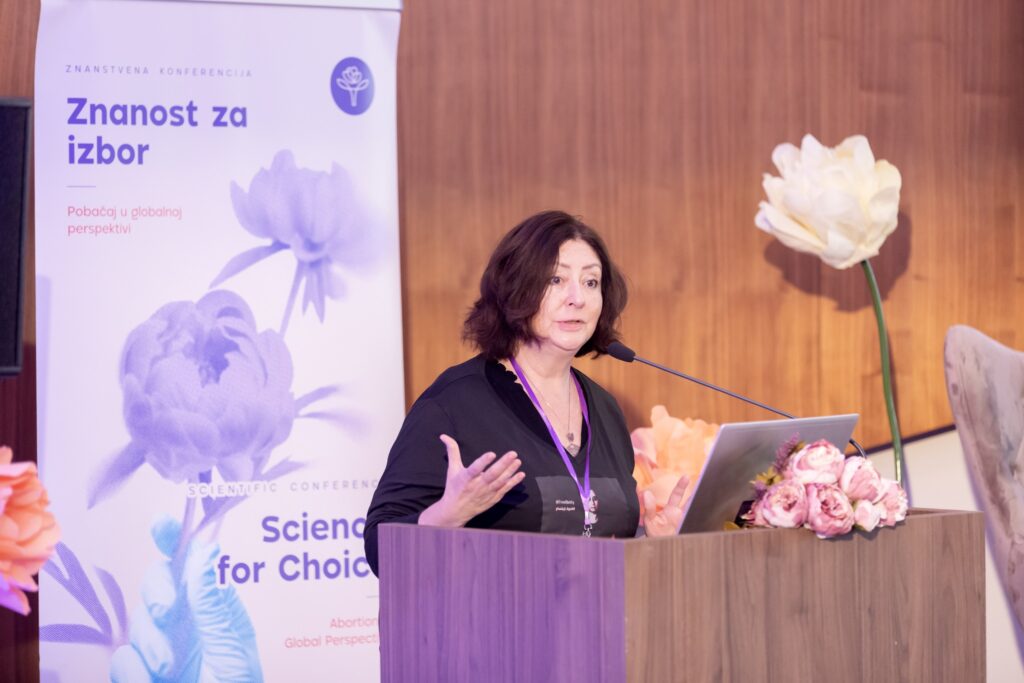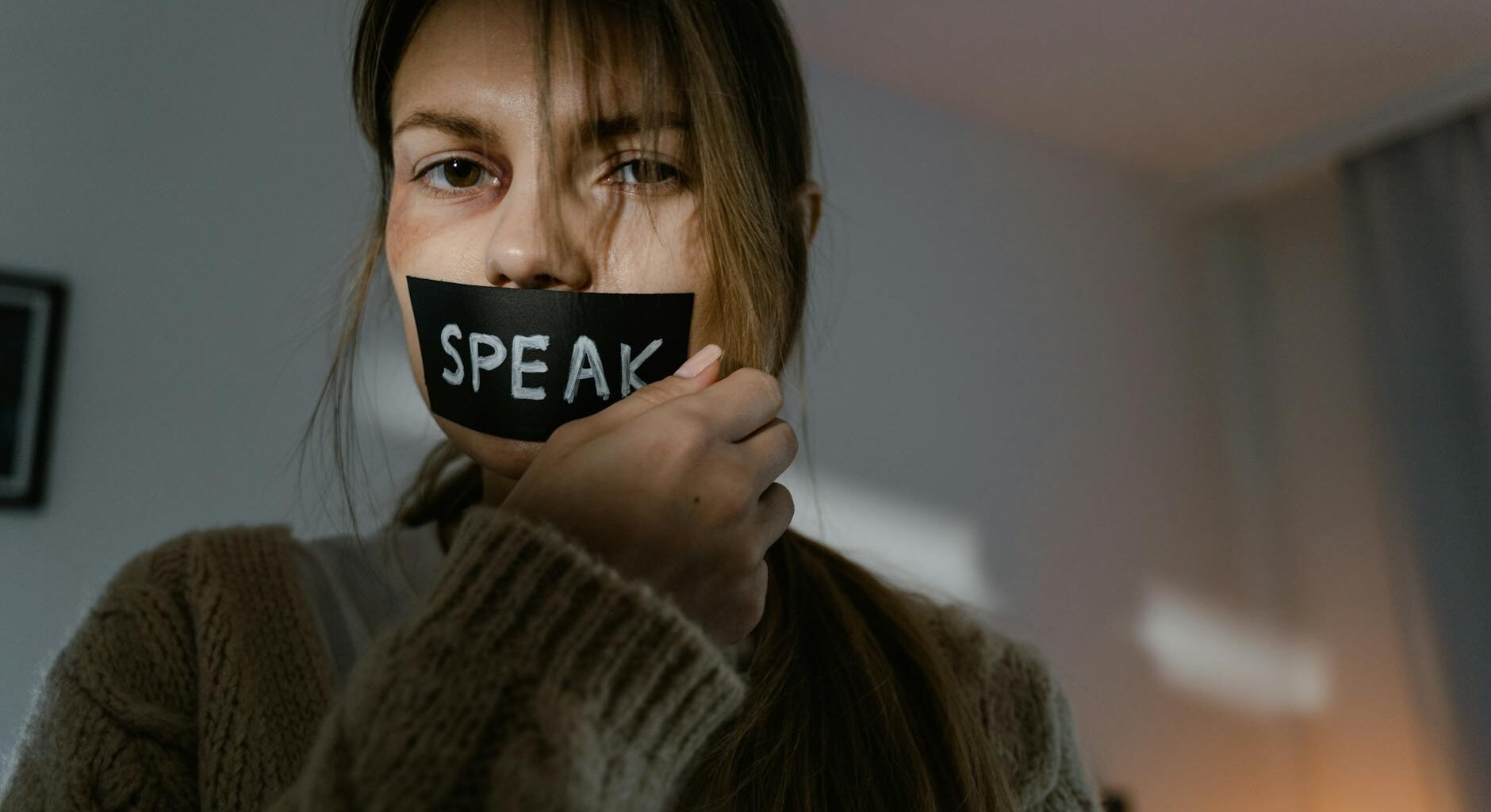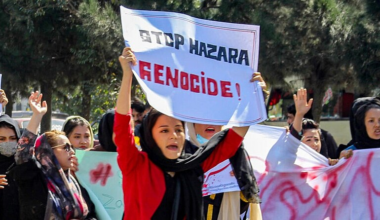This is the amended text of a speech given by me at the International Conference on Science for Choice, held in Split, Croatia, on 27 September 2025. I spoke in place of Ibtissame Betty Lachgar, who has been sentenced to two and a half years in prison in Morocco for wearing, in London, a t-shirt stating ‘Allah is Lesbian’. Lachgar, co-founder of the Mouvement alternatif pour les libertés individuelles (MALI), has long defended women’s rights and bodily autonomy in the face of fierce religious and political opposition. As a cancer survivor, her imprisonment is not only unjust but also dangerous to her health. She should be free, honoured for her courage and lifelong defence of freedom, not behind bars.
Earlier this week, Lachgar’s appeal was rejected and her sentence upheld. This article is dedicated to her and the plight of all women like her. We must renew our commitment to #FreeBetty!

Across the world, women’s bodies remain battlegrounds for political, religious, and economic control. Abortion restrictions and bans, like other restrictions on women’s rights and freedoms, serve to police and discipline women, regulate sexuality, and reinforce power. Whether under Islamism, Catholicism, or other religious-Right or authoritarian states, the goal is the same: to control women’s bodies as a means of controlling society itself.
In Morocco, for example, abortion remains a criminal offence except when it is deemed necessary to save a woman’s life or health—a definition interpreted so restrictively that access becomes virtually impossible. The framework also demands both medical and, at times, spousal approval, ensuring that women’s autonomy is always conditional.
Amnesty International reports that one young woman, Salma, became pregnant after rape. Because Moroccan law criminalises abortion, she had no legal recourse and resorted to an unsafe abortion. She was later coerced into marrying her rapist. ‘I was treated like a criminal when I was the victim’, she said.
This is true in many countries under Islamic laws, where abortion laws generally fall into four categories. I have based these on G. K. Shapiro’s 2014 article in the journal Health Policy and Planning, ‘Abortion law in Muslim-majority countries’:
- Life only: abortion permitted solely to save a woman’s life (18 countries, e.g. Afghanistan, Egypt, Saudi Arabia, Yemen).
- Life and health: permitted when pregnancy endangers physical or mental health (9 countries, e.g. Algeria, Morocco, Pakistan).
- Specific grounds: permitted in cases such as rape, incest, or foetal impairment (9 countries, e.g. Iran, Indonesia, Sudan, Bangladesh).
- On request: allowed in early pregnancy (11 countries, e.g. Tunisia, Turkey, Kazakhstan, Kyrgyzstan).
The pattern is clear. The more restrictive the law, the higher the rate of unsafe abortions and the greater the toll in women’s deaths and suffering. In states where abortion is legal on paper, albeit with ‘life-threatening’ restrictions, medical and bureaucratic gatekeeping often denies real access.
In Iran, for example, legal abortion is allowed only in extremely limited circumstances: three medical specialists must certify that the pregnancy endangers the woman’s life or that the foetus has a serious anomaly, and then the state’s Legal Medicine Organisation must approve it, all before 19 weeks of gestation.
This process is designed to deter. According to a 2024 study, an estimated 300,000–600,000 illegal abortions occur annually in Iran. By contrast, in 2015–2017, 15,617 applications for legal abortion permission were granted, overwhelmingly for foetal causes rather than maternal causes; older reports suggest 7-8,000 abortions were granted.
Many underground feminist networks distribute abortion pills via encrypted channels and offer discreet counselling, despite the threat of arrest. Hospitals sometimes treat cases involving complications from unsafe abortion.
Abortion outside narrow legal exemptions is criminalised: those who encourage abortion can face three to six months’ imprisonment, providers six months to three years, plus diyyeh (financial compensation) to the foetus’s guardian (a male). Punishments escalate after the stage of ‘ensoulment’ (commonly set at 120 days), when abortion may be treated as homicide. Early in 2025, Iranian state-run media reported a death sentence against a person accused of performing 140 illegal abortions; they were charged with ‘corruption on earth’.
Abortion bans are not limited to the states with Islamic laws. Some of the harshest restrictions exist in Christian-majority countries like El Salvador and Honduras, where abortion is banned under all circumstances and women face prison sentences even for miscarriages.
Wherever abortion restrictions are imposed, they serve clear political, economic, and ideological aims. Religious and nationalist movements frame abortion as a threat, linking bans to the protection of family, religion, nationalism, and identity. Though couched in the language of ‘morality’, abortion bans are tools of power. By controlling sex, marriage, and fertility, states enforce order and hierarchy. They uphold the patriarchal family, binding women to compulsory motherhood. Abortion restrictions ensure a steady supply of workers, carers, and soldiers for the state, while keeping women dependent. Criminalisation disciplines women through fear and deepens surveillance of their bodies.
As Marxist feminist Sylvia Federici argues in Caliban and the Witch (2004), the witch hunts, suppression of midwifery, and criminalisation of abortion stripped women of control over reproduction and handed it to the state, church, and capital.
Neoliberalism, austerity, and privatisation intensify this logic. Social safety nets erode, and the burden of care shifts back onto women. Abortion restrictions ensure women continue to perform this unpaid labour under moral and legal coercion.
Every advance in women’s autonomy, including in accessing contraception, sexual freedom, and abortion rights, provokes backlash. Yet repression always meets with women’s resistance. Women continue to fight back, often at great risk. MALI, co-founded by Ibtissame Betty Lachgar, is a great case in point. They have kept abortion on the public agenda in Morocco, famously inviting the Women on Waves ship in 2012 and distributing abortion pills despite harassment and threats.
In Pakistan, the Aurat March has transformed Mera Jism Meri Marzi (‘My Body, My Choice’) into a national slogan despite blasphemy accusations, mob threats, and legal harassment. Alongside protests, activists provide abortion pills and post-abortion care, saving lives under restrictive laws.
In Turkey, abortion has been legal on request since 1983, yet only 7.8% of state hospitals actually provide it. When the Islamist Erdogan government attempted a near-total ban in 2012, tens of thousands of women marched through Istanbul and Ankara, chanting, ‘Abortion is a right, abortion saves lives’. The mobilisation forced the government to retreat.
In Tunisia, where abortion is legal on request, feminists confronted rising Islamist pressure after 2011 by staging hospital sit-ins, defending access, and resisting attempts by institutions to pressure doctors into refusal policies.
In Rojava (the autonomous Kurdish region of northern Syria), the feminist revolutionary project has institutionalised women’s rights even in war. Sex parity in governance, women’s houses, and autonomous justice systems have become norms. Abortion is legally available as part of women’s right to health and self-determination.
In Iran, the Woman, Life, Freedom uprising following the 2022 killing of Mahsa Jina Amini has declared bodily autonomy as a frontline demand. Women publicly unveiled, burned their headscarves, and confronted clerics. The ‘turban-flying’ protests—where people knocked clerics’ turbans off their heads—became a potent symbol of rejecting male religious authority and patriarchy.
Abortion bans are not about morality; they are about maintaining order through control of women’s bodies. Women’s rebellion and body riots insist that bodily autonomy is non-negotiable and that the struggle for women’s bodily autonomy is not peripheral to human freedom but at its core.
Related reading
Freedom of expression lives where offence begins: In defence of Ibtissame Betty Lachgar, by Maryam Namazie
Feminism and religion are incompatible, by Maryam Namazie
No Hijab Day, 1 February: Confronting Misogyny, by Maryam Namazie
It is time to recognize sex apartheid as a crime against humanity, by Maryam Namazie
For Mahsa Jina Amini and Woman, Life, Freedom: Summoning an Age of Humanity in an Age of Hate, by Maryam Namazie
Image of the week: ‘Allah is lesbian’ (#FreeBetty), by Daniel James Sharp
Verses of Life: A Review of ‘Woman Life Freedom: Poems for the Iranian Revolution’, edited by Bänoo Zan and Cy Strom, by Daniel James Sharp
The ‘Women’s Revolution’: from two activists in Iran, by Rastine Mortad and Sadaf Sepiddasht
The Silent Revolution Against Religious Oppression in Iran, by Siavash Shahabi
‘Words are the only victors’ – Salman Rushdie’s ‘Victory City’, reviewed, by Daniel James Sharp
Image of the week: celebrating the death of Ebrahim Raisi, the Butcher of Tehran, by Daniel James Sharp
The hijab is the wrong symbol to represent women, by Khadija Khan
Iran and the UN’s betrayal of human rights, by Khadija Khan
Rap versus theocracy: Toomaj Salehi and the fight for a free Iran, by Noel Yaxley
Afghan Tourism or Taliban Whitewashing? by Zara Kay
A Small Light: Acts of Resistance in Afghanistan, by Zwan Mahmod
The Taliban’s unceasing war on Afghan women, by Khadija Khan
Secularism is a feminist issue, by Megan Manson
What the Muslim world can learn from Tunisia, by Kunwar Khuldune Shahid
From the streets to social change: examining the evolution of Pakistan’s Aurat March, by Tehreem Azeem









Your email address will not be published. Comments are subject to our Community Guidelines. Required fields are marked *
Donate